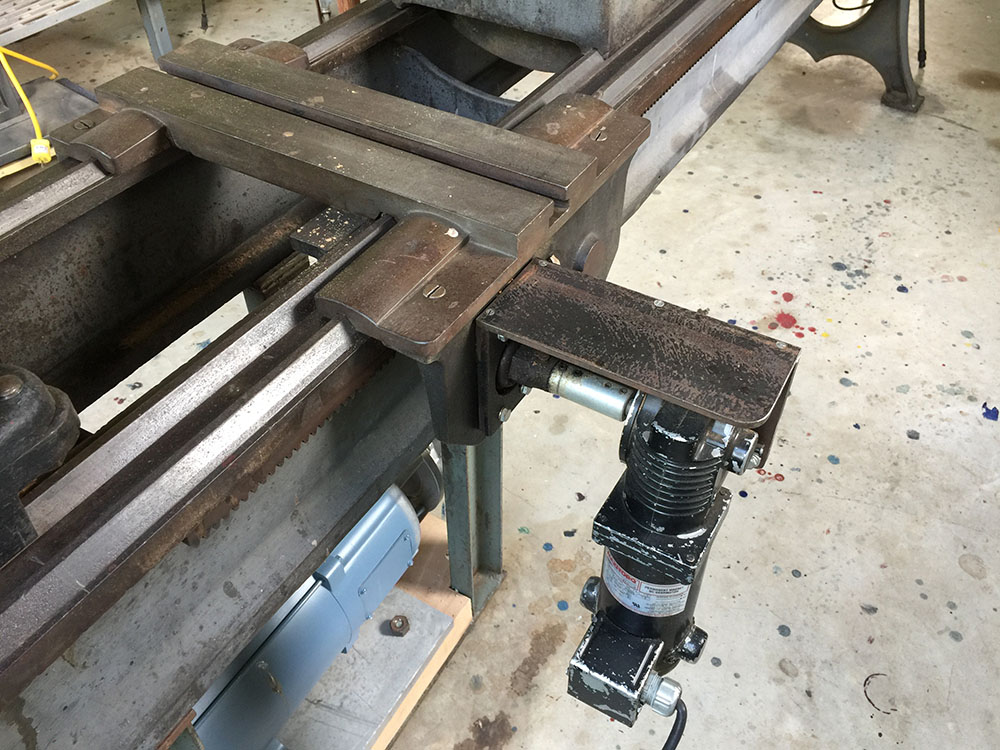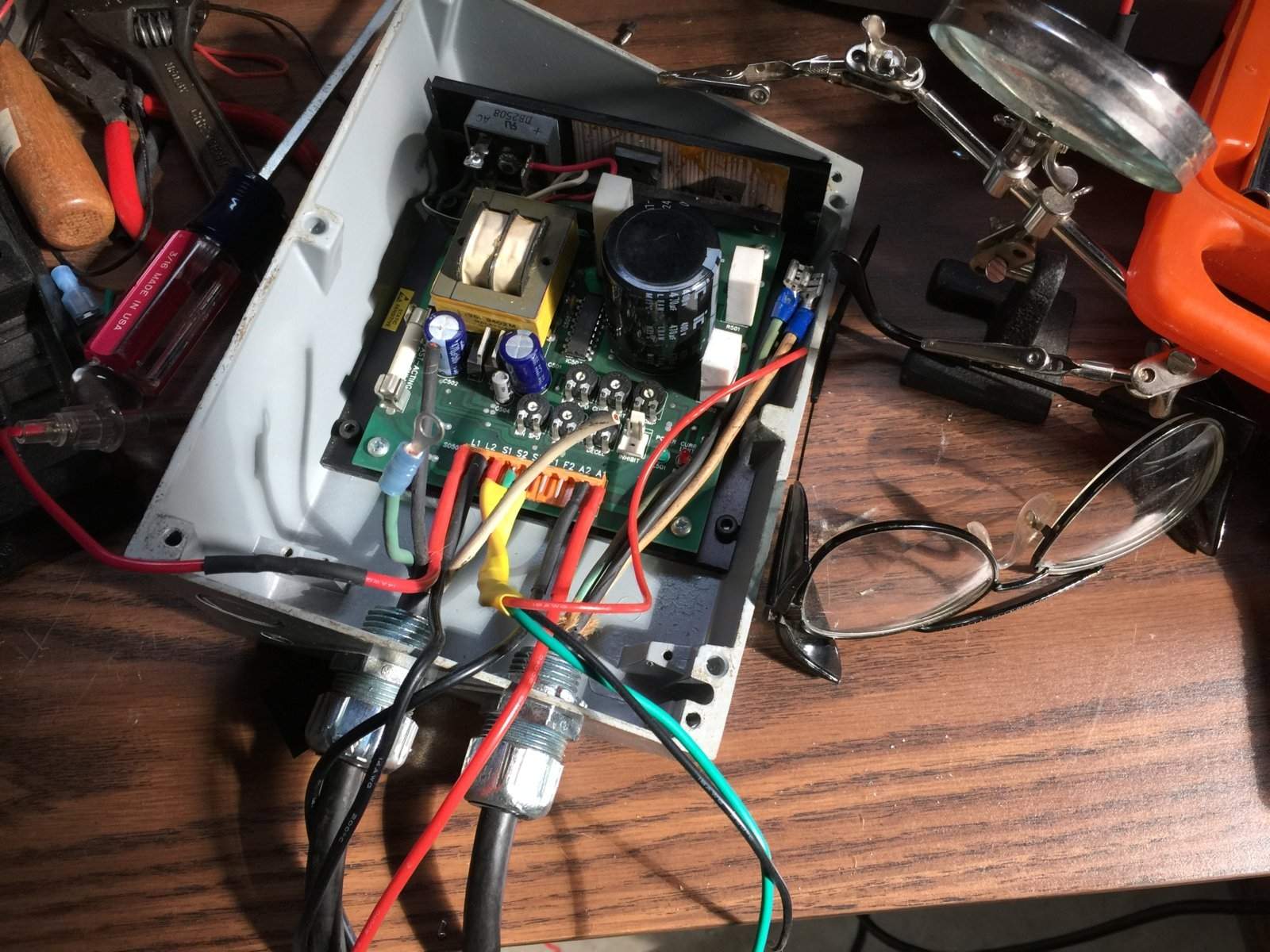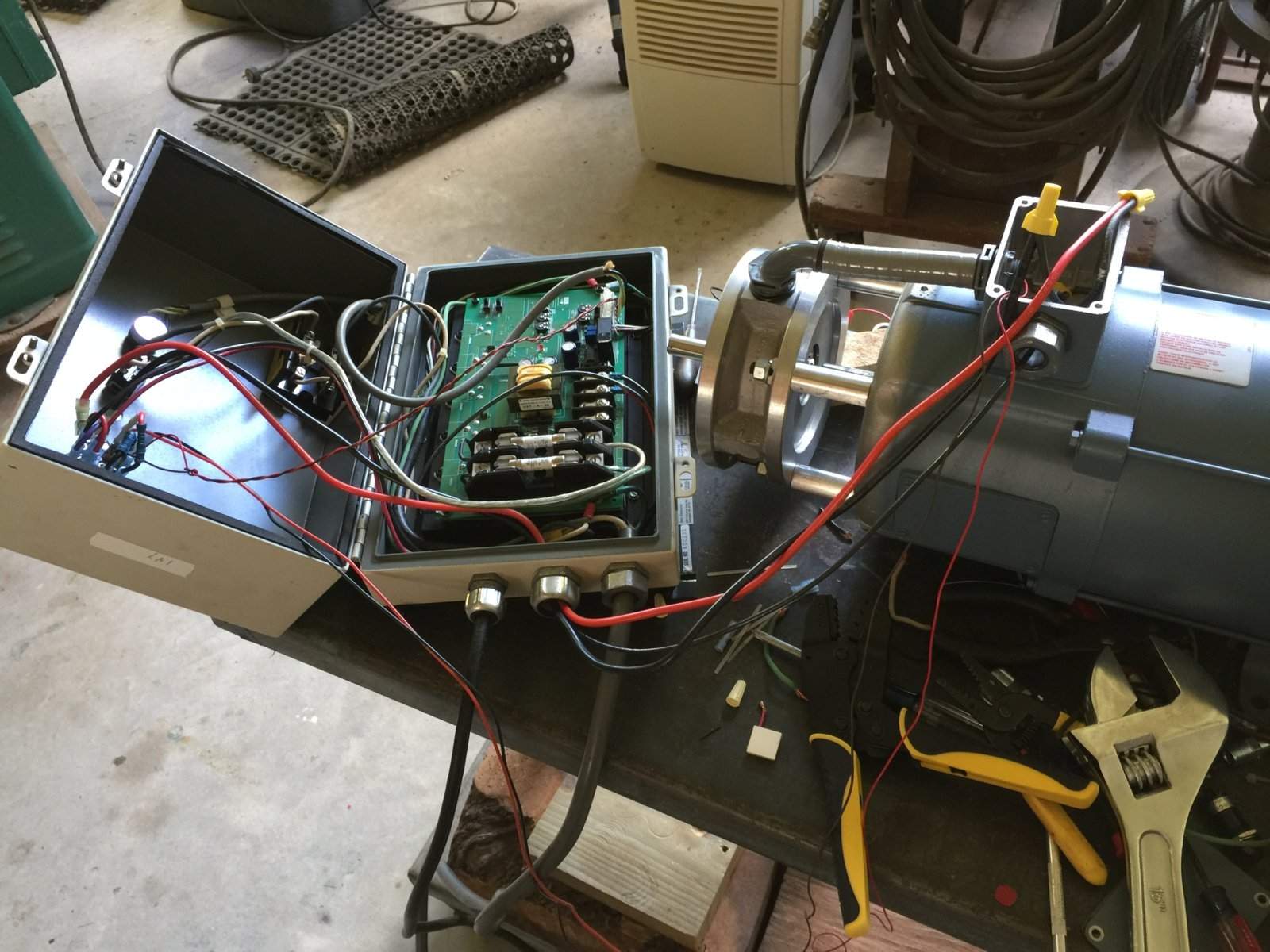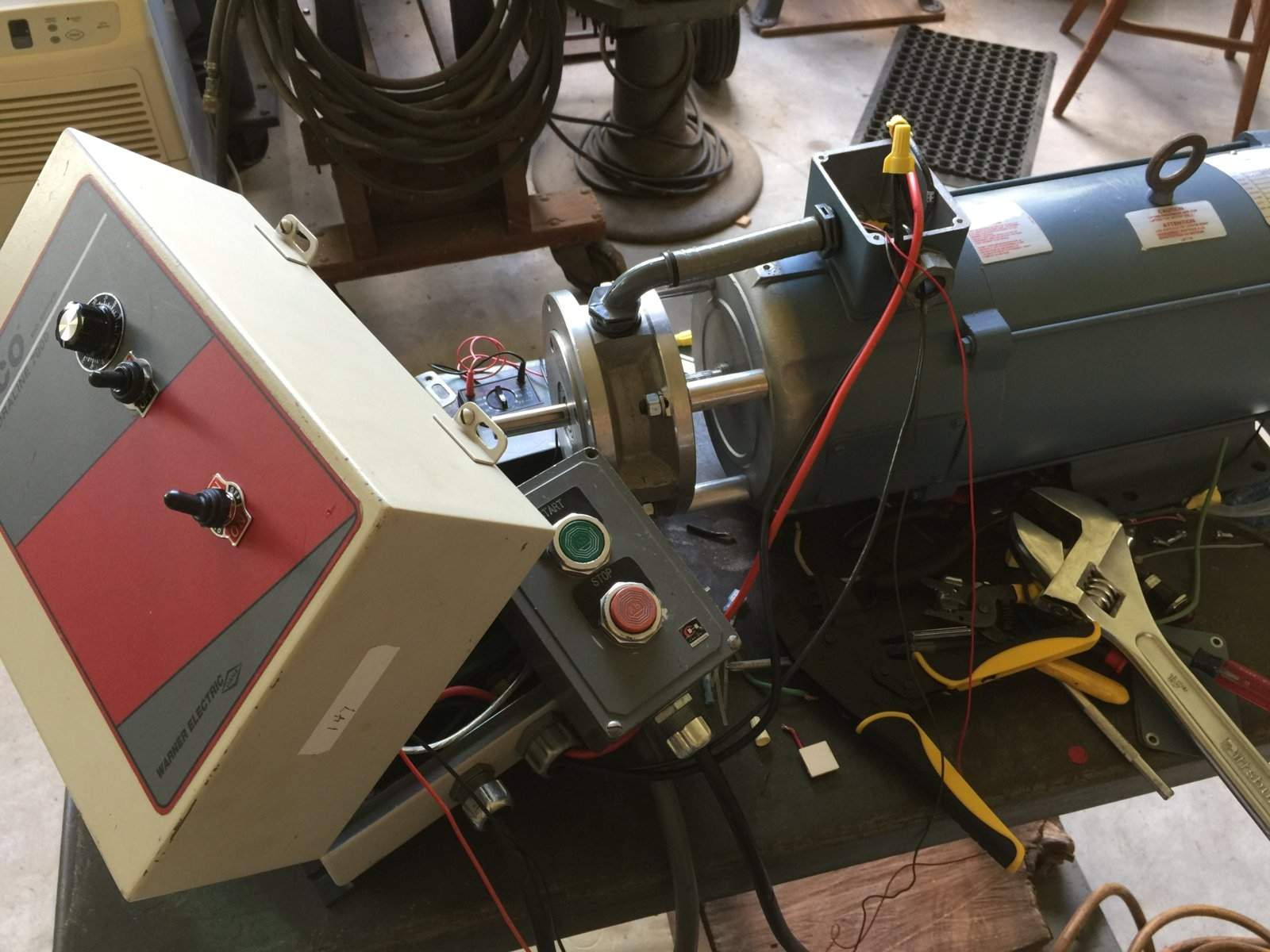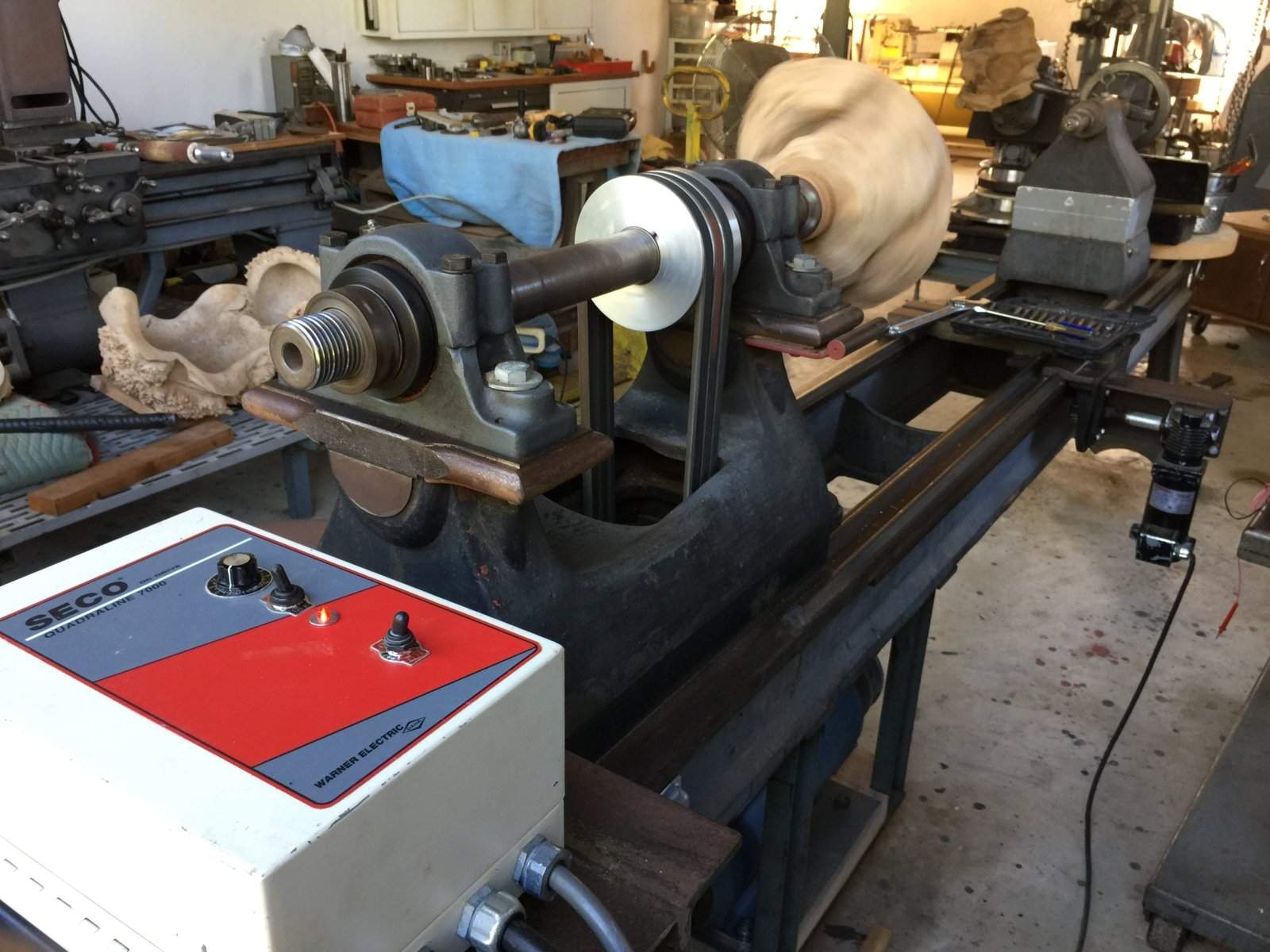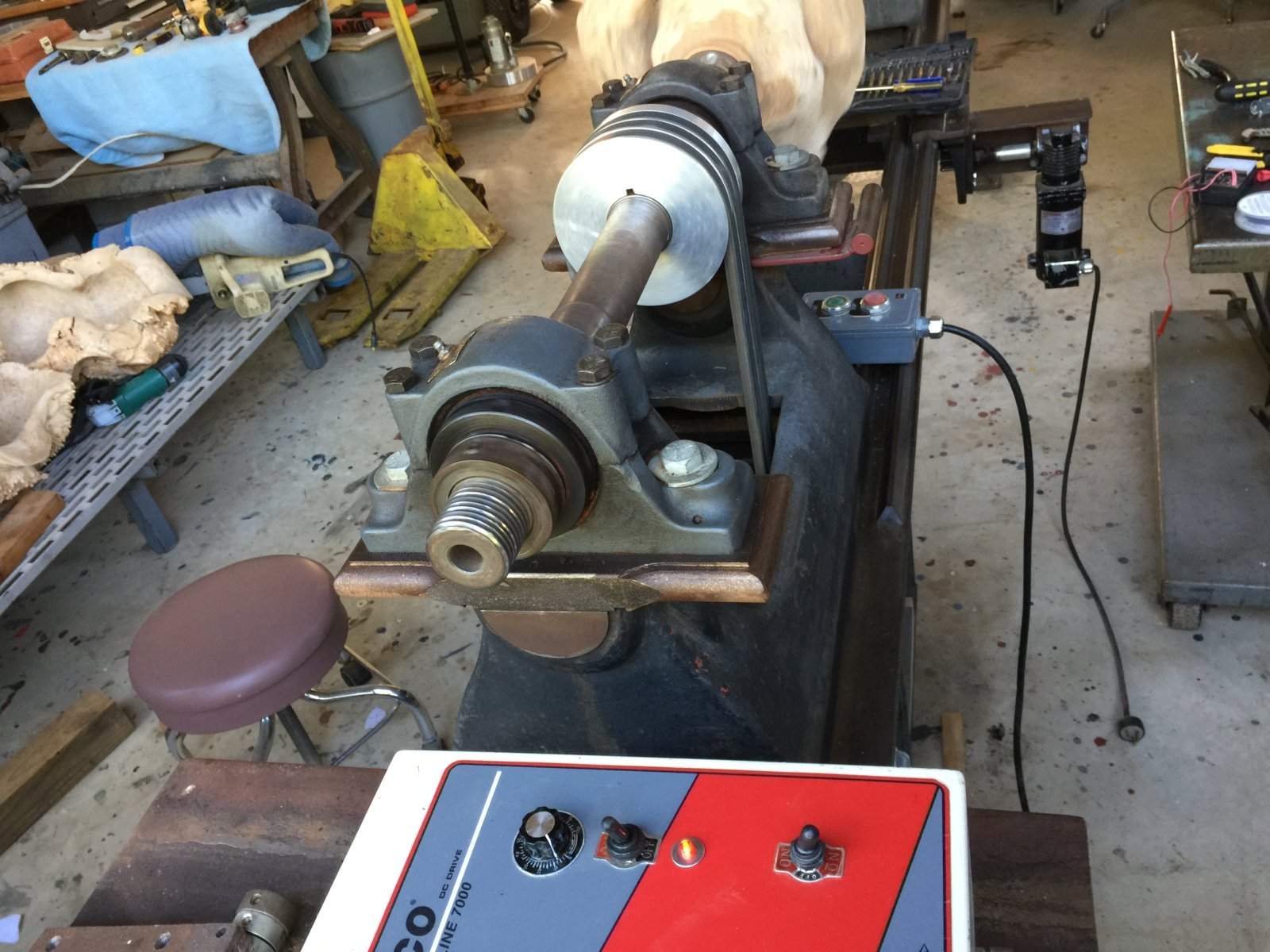Here is a video about changing out an old US Motors Vari Drive Gear Motor with a Baldor 3 HP 180 Volt DC Motor and custom controllers. I've used the old motor for over 35 years. The belt in the sheave drive was slipping at low rpm's, then catching and quick-accelerating, something I couldn't abide with 2ft plus diameter x 6ft plus pieces. So I finally changed the motor out. The second part of the video is testing the new motor and drives and using a new tool. I've always been interested in the sounds lathes make and I experimented with slow motion and the rhythms of the machine cutting wood. Some may find part 2 tedious, others may enjoy the music. -Mark
View: https://m.youtube.com/watch?v=nBzZtM2ItAA
PS - Video is best at 720 HD and played with a good monitor and speakers.
PS - Video is best at 720 HD and played with a good monitor and speakers.
Last edited:

